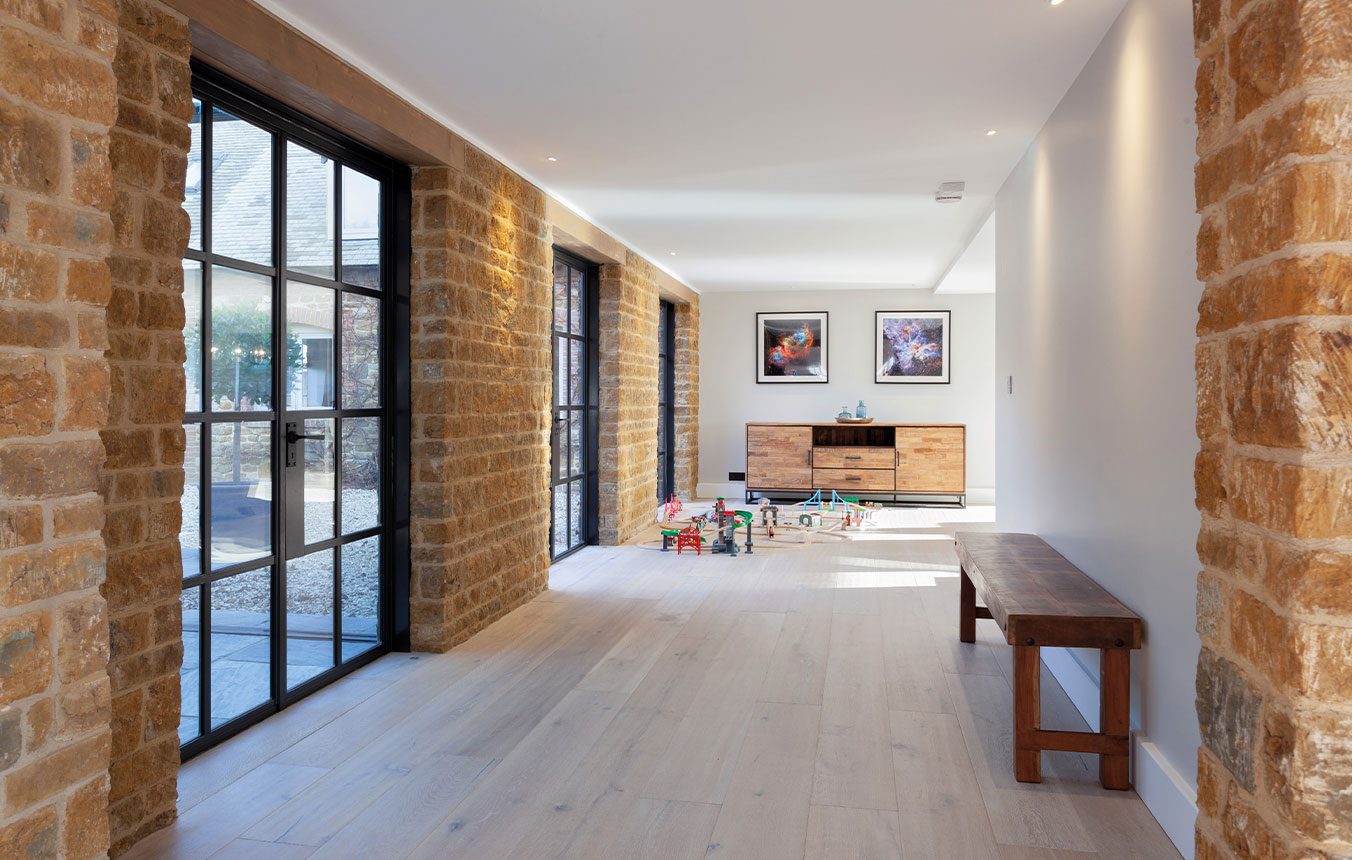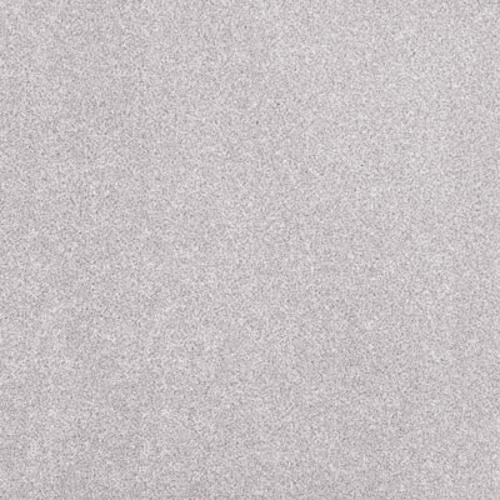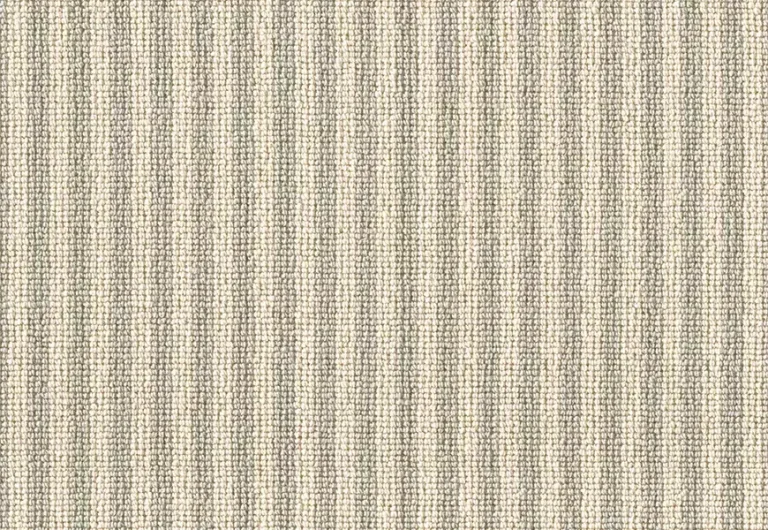Engineered wood flooring has become a popular choice among many homeowners and interior designers alike. However, many people think of engineered wood as an alternative of hardwood flooring. Some even call it “fake wood flooring” but that’s actually not the case. If you are here, you are probably looking for new flooring for your home renovations or commercial project and thinking of getting engineered wood flooring. This article will help you to know everything about it.

So what is engineered wood flooring?
Engineered wood flooring, also known as engineered hardwood flooring, is a type of flooring designed to imitate the appearance and characteristics of solid hardwood flooring with added durability and stability. The combination of veneer layer and plywood core layers bring out the best of solid wood quality and composite wood durability.
Engineered wood floors are typically made of multi layers constructions. The top layer, known as veneer layer or wear layer is usually made of a thin slice of solid wood, which provides the authentic look and feel of solid wood floors. The core layers are made up of less expensive materials, consisting of several layers of plywood or high-density fiberboard (HDF) which are bonded together in a cross-grain configuration to minimize the effects of temperature changes and humidity fluctuations. The bottom layer is typically made of hardwood or softwood and serves as additional support and stability for the flooring.

The Pros and Cons of Engineered Wood Flooring
Just like every coin has two sides, engineered wood floors are not all about beauty, aesthetic and durability. There are some downsides that you must consider before purchasing your new flooring. If you are looking for a wooden look for your floor, you might also consider its contenders such as solid wood flooring and luxury vinyl tile (LVT).
In this section, we will give you a detailed overview of engineered wood floor when compared to solid wood floor and LVT.
- Construction and Composition
Engineered Wood Vs Solid Wood Floor
As we mentioned before, engineered hardwood flooring is constructed with 3 main layers, while solid wood flooring is made entirely of solid wood, typically with a uniform thickness throughout. The core and bottom layers of engineered hardwood flooring enhance the stability and resistance to temperature and moisture fluctuations.
LVT
While engineered hardwood is designed to mimic the authentic look and warmth of real wood including the natural grain patterns, textures and variations in colours, LVT is not made of wood but designed to look like various materials such as wood, stone and tile. LVT also comes in a wide range of styles, patterns, and colors. Although advanced printing and embossing technologies have made LVT increasingly realistic, it may lack the depth and authenticity of real wood.
So, in terms of construction and comparison, we think engineered hardwood flooring is a much better option than its contenders.
- Durability
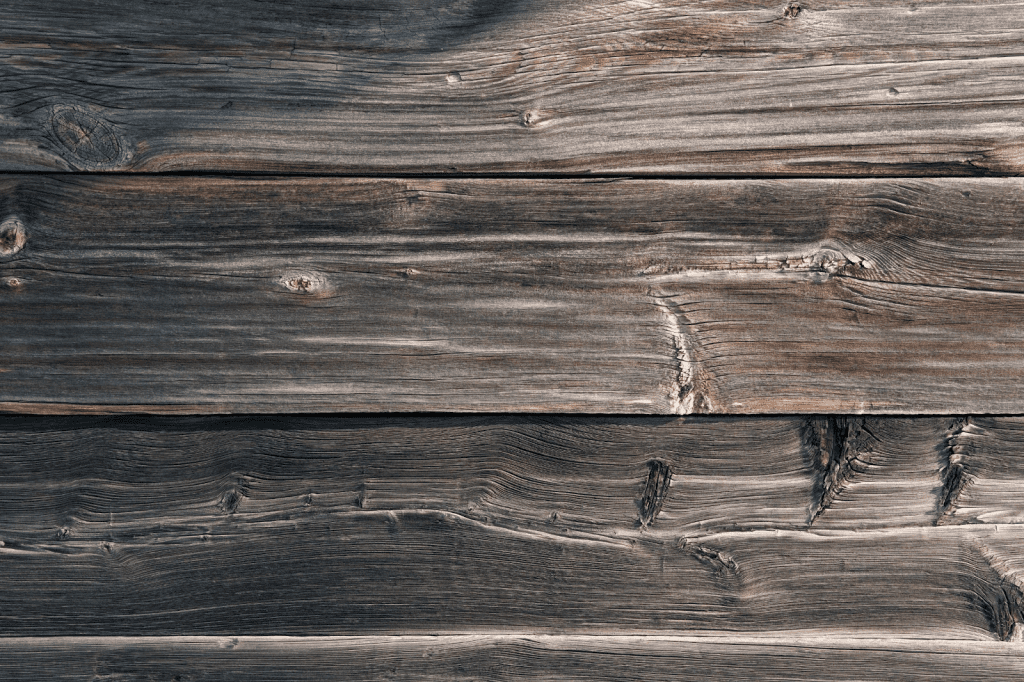
Engineered Wood Vs Solid Wood Floor
Whatever best brands of engineered wood you have, over time it will dent, scratch and fade. Because engineered hardwood flooring is basically made of wood. Although it is more durable compared to other hardwood floors, it depends on various factors such as such as the thickness of the veneer layer, the quality of the product, and the wood species used.
Additionally, some manufacturers may use low quality core layers materials such as oriented strand board (OBS). This will make your engineered hardwood flooring less durable to impact and heavy furniture, causing it to wear out quickly.
LVT
On the other hand, LVT is highly durable and resistant to scratches, stains, and water. It is an excellent choice for high-traffic areas or homes with pets and children. LVT is generally low maintenance, too.
- Lifespan
Engineered Wood Floor
Engineered wood flooring has a limited number of times it can be refinished compared to solid hardwood flooring. The thickness of the veneer layer determines how many times it can be sanded and refinished. Thicker wear layers allow for more refinishing, but with thinner wear layers, some can only be refinished once and some others can not even be refinished at all!
LVT
When compared to LVT, engineered hardwood has similar lifetime with LVT. What makes it different though, is that LVT doesn’t need to be refinished because it’s not made of actual wood. In addition to that, as mentioned before, LVT is more resistant to scratches, stains and water.
Solid Wood Floor
On the other hand, solid hardwood can be refinished multiple times throughout its life time. That being said, solid hardwood can last for generations while LVT and high quality engineered wood floor can give you a good 20 to 30 years.
- Vulnerability to Water & Moisture Damage
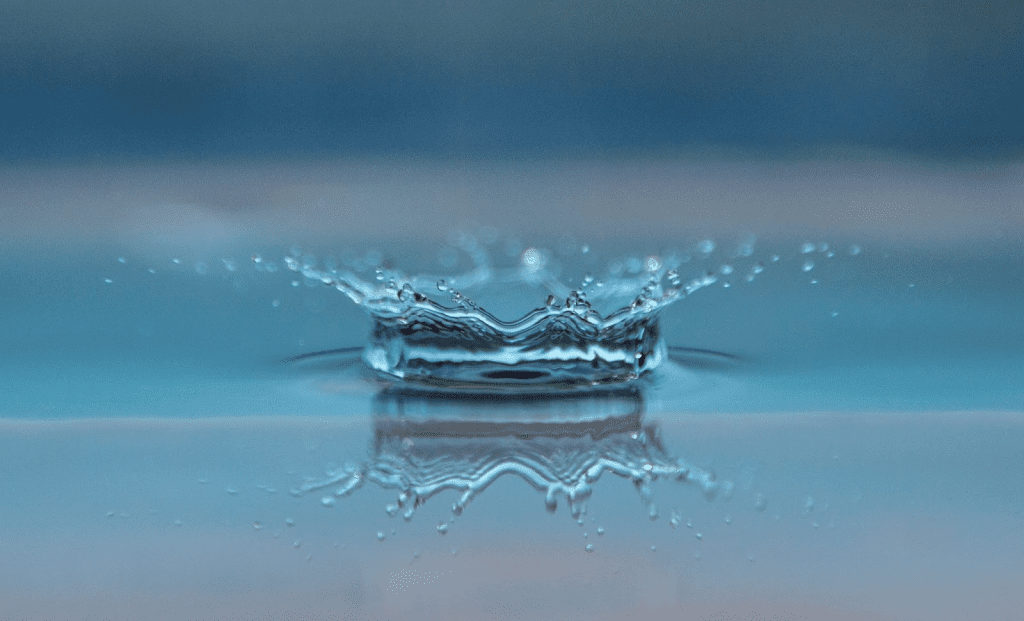
Engineered Wood Vs Solid Wood Floor
Engineered wood is made from natural materials, which means they can warp and bend when exposed to standing water area. Although engineered wood flooring is considered to be more moisture-resistant than solid hardwood, it is still susceptible to moisture damage under certain conditions. Excessive exposure to water or prolonged high humidity levels can cause the layers to separate or swell, leading to potential swelling or buckling.
Engineered wood flooring is not recommended for areas prone to moisture, such as kitchens, bathrooms or basements. It is also not a good option if you have young children at home since they may spill food and water on the floor.
LVT
On the contrary, LVT is highly resistant to moisture, making it suitable for areas where water exposure is common, such as kitchens and bathrooms. It can withstand spills and moisture without warping or damage.
- Fades when exposed to sunlight

All three contenders, engineered wood flooring, solid wood flooring and LVT, can fade over time if exposed to sunlight. Like any other natural materials, the colour of wooden flooring can be affected by UV rays. We’re not even talking about outdoor direct sunlight, but most rooms do have access to sunlight and this can be a problem to maintain the colour of your hardwood floors. As for LVT, although it is not made of wood, the outer layer is not UV resistant.
However, the extent of fading for engineered wood flooring depends on several factors, including the wood species, the quality of the finish or topcoat, and the intensity and duration of sunlight exposure. Some wood species, such as oak, tend to be more resistant to fading compared to lighter or more delicate woods. Additionally, certain finishes or topcoats may have UV protection properties that can help minimize fading.
- Installation
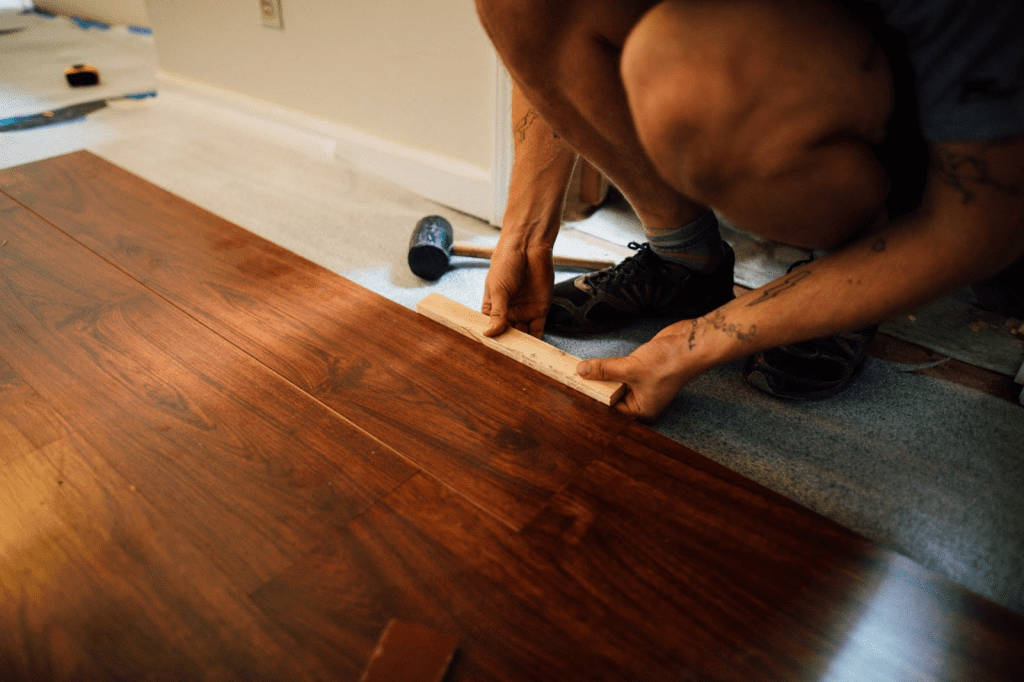
Engineered Wood Floor
It is fairly easy to install engineered wood flooring. Engineered hardwood offers more installation options than solid wood flooring, including floating floors, glued down, or nailed down methods. A floating floor is a technique where individual planks are fitted over an existing flooring like a puzzle, making it suitable for DIY projects. If you choose to glue down your floor, the installation process could be a bit more complicated and our recommendation is to hire a professional fitter.
Engineered wood can also be installed over various subfloors including concrete subfloor and is suitable for both above-grade and below-grade applications.
LVT
Like engineered wood flooring, LVT also offers easy installation options. It can be installed as a floating floor with a click-and-lock system or glued down. LVT is often considered a DIY-friendly option.
Solid Wood Floor
On the other hand, solid hardwood is typically nailed or stapled down to a wooden subfloor. It requires more expertise and specialized installation techniques. Solid hardwood is not recommended for areas with significant moisture or radiant heating systems.
- Styles and Finishes
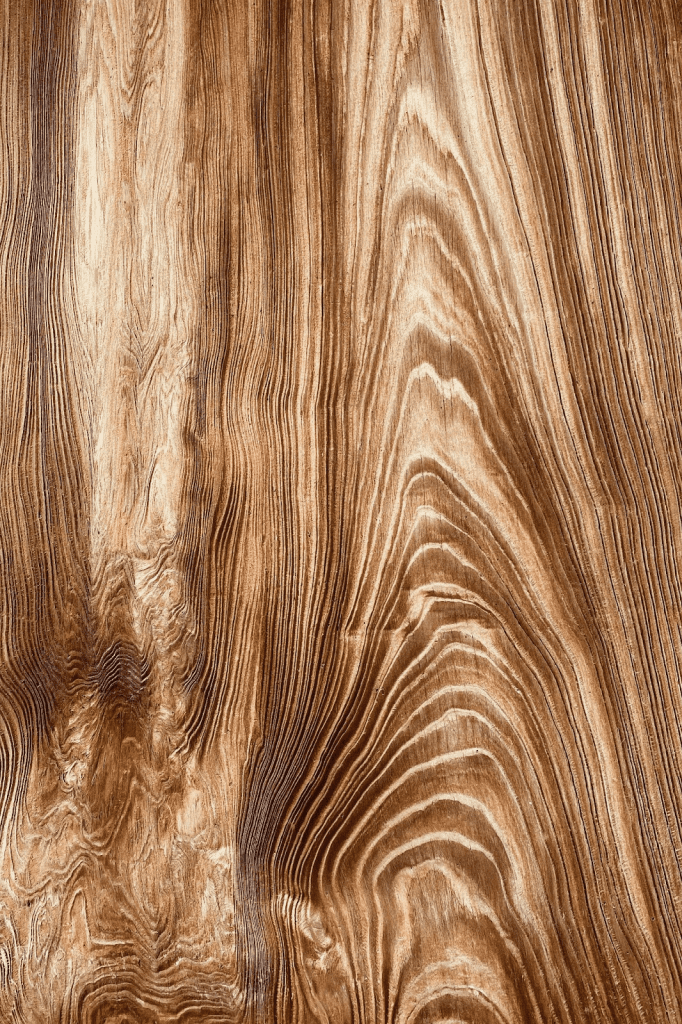
Engineered Wood
Engineered wood flooring offers a diverse selection of styles, finishes, and wood species. Whether you prefer the classic look of oak, the exotic appeal of Brazilian cherry, or the contemporary charm of maple, there are options to suit various design aesthetics. Additionally, engineered wood flooring comes in different plank widths, lengths, and textures, allowing for customization and flexibility in achieving the desired visual effect.
LVT
Similar to engineered wood flooring, LVT also comes in a wide variety of styles because it is designed to mimic the appearance of natural wood. However, bear in mind that LVT lacks of the authenticity of wood.
Solid Wood
Whereas solid hardwood offers the unmatched authenticity, richness, and character of real wood. It has a timeless appeal and unique variations in grain, color, and texture.
Engineered Wood
Low-quality engineered wood flooring can potentially off-gas chemicals, especially if it is made with substandard materials or adhesives. Off-gassing refers to the release of volatile organic compounds (VOCs) into the air, which can contribute to indoor air pollution and impact indoor air quality. Cheaper engineered wood flooring may be more likely to contain higher levels of formaldehyde or other volatile chemicals. Formaldehyde is a common VOC found in some engineered wood products, particularly in the adhesives used to bind the layers of the flooring together.
However, a high quality engineered wood flooring is considered an environmentally friendly option. By using a thin layer of solid hardwood as the wear layer, it maximizes the use of available resources while still providing the aesthetic appeal of hardwood. Additionally, engineered wood flooring often uses more sustainable wood species and utilizes wood veneers, which can be sliced thinly from a single log, minimizing waste. That being said, do make sure to look at the environment certification from the manufacturer since this can vary from one company to others.
Solid Wood
Solid wood is also considered to have low environmental impact. Wood is regarded as a carbon-neutral product since trees absorb carbon dioxide and release oxygen; this status holds true even after it has been harvested.
LVT
LVT, on the other hand, is not very eco-friendly. LVT is made of polyvinyl chloride (PVC) and can emit VOCs after installation. And like all plastic, it can’t be recycled, it’s not biodegradable, thus it is not sustainable.
Cost

Engineered Wood Vs LVT
We have to admit that engineered wood flooring are more expensive than most flooring options such as carpets, LVT or laminate flooring. This is because engineered hardwood flooring use real wood veneer as wear layer.
Engineered hardwood flooring also comes in different unique designs, grading and surface treatment to suit whichever decorating styles you want, from a clean wooden look to dramatic decor. For example, if you want to have a warm, rustic style, you can opt for a dynamic grading with handscraped design feature and matt lacquer surface treatment. You can also have your floor in several designs such as 1 strip design where the wear layer is sawn in one piece, or a 3 strip design where the wear layer is 3 strips wide, offering endless decorating opportunities and look. These unique attributes make engineered hardwood cost more than other flooring options.
Engineered Wood Vs Solid Wood
However, compared to solid hardwood, engineered wood is generally considered a more affordable flooring. Solid hardwood is usually more expensive than engineered wood due to its premium quality and the cost of sourcing and processing solid wood. We all know that exotic wood species such as Brazilian Cherry, Mahogany or Teak are gorgeous, but they are also very expensive. With engineered hardwood you can experience the luxury and beauty of exotic species at a much cheaper price. Remember that they come in different finishes, styles and textures, making it easier for you to customize your floor.
The Verdict

Engineered Hardwood Floor Vs LVT
Yes, we admit that LVT is more durable, higher resistant to water and moisture, easier to maintain and cheaper, but we still think that engineered hardwood floor is better than LVT is you are looking for wooden flooring. LVT does not provide the feel and luxury of wood for your under feet. So, we think spending a little bit more money and effort for engineered hardwood floor will be totally worth it.
Engineered Hardwood Floor Vs Solid Hardwood
Although solid wood offers better quality, better durability and longer lifespan, we still think that engineered wood is the winner. Not only it provides the same aesthetic aspect as solid wood, it enhances the stability and resistance to moisture, it is easier to install and comes at a cheaper price too.
In other words, we think that engineered wood flooring is the best option if you want to have all the benefits of the luxury and authenticity of wood at a cheaper price.
Some Tips From Us
The most popular type of engineered wood flooring

There are a wide variety of engineered wood flooring products in stores such as engineered walnut wood, engineered maple wood, engineered hickory wood but one of the most popular is engineered oak flooring. Oak wood has long been revered for its stunning aesthetic qualities. It boasts a rich, warm hue and a distinct grain pattern that exudes elegance and sophistication. The inherent beauty of oak wood adds a touch of natural charm to any space, be it traditional or contemporary.
Like any other engineered wood floorings, engineered oak wood floors are multi layers constructed with authentic solid oak wood as the top layer, providing the desired look and feel, including the distinctive grain patterns and rich colors characteristics of oak. Engineered oak wood flooring is available in various finishes, including natural, oiled, or lacquered, allowing homeowners to choose the desired look and style for their space. The planks come in different widths, lengths, and textures, providing versatility in design options.
With its timeless appeal, remarkable durability, and versatility, engineered oak wood flooring offers a perfect blend of natural beauty and practicality. In case you are overwhelmed by the wide variety of engineered wood flooring products, our tips is to go for engineered oak flooring.
Engineered wood flooring maintenance & aftercare
To maintain the beauty of your new engineered wood flooring you need to do regular cleaning. Here are some tips from us:
- Sweeping or Vacuuming
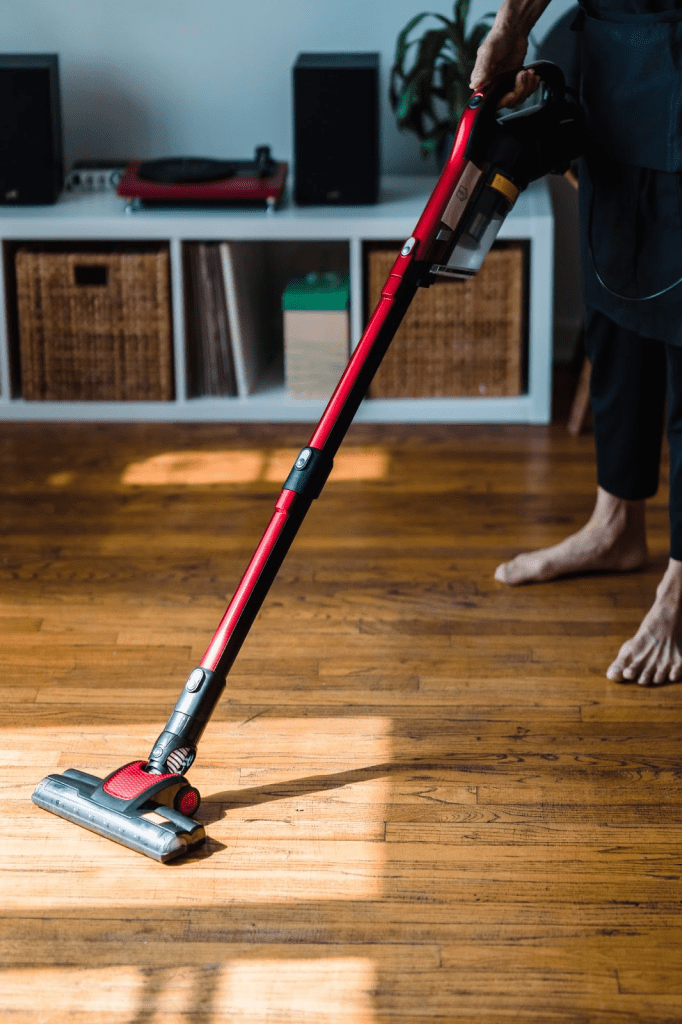
Regular sweeping or vacuuming will prevent particles from scratching the surface of the flooring. Always use a soft bristle broom or vacuum cleaner with a floor brush attachment to remove dust and dirt.
- Damp Mopping
When mopping your engineered wood, only use a well-wrung mop or a microfiber mop. Remember that engineered hardwood floor is vulnerable to water and moisture so avoid excess water and immediately wipe any spills.
- Use Gentle Cleaner
Do not use abrasive cleaner, harsh chemicals or wax-based products as it can damage the veneer layer of your engineered wood flooring.
We now know that engineered wood is susceptible to dents and scratches. Here are some tips to prevent any damage:
- Use Rugs and Mats
Place rugs or mats in high traffic areas to prevent the finish from coming off your floor.
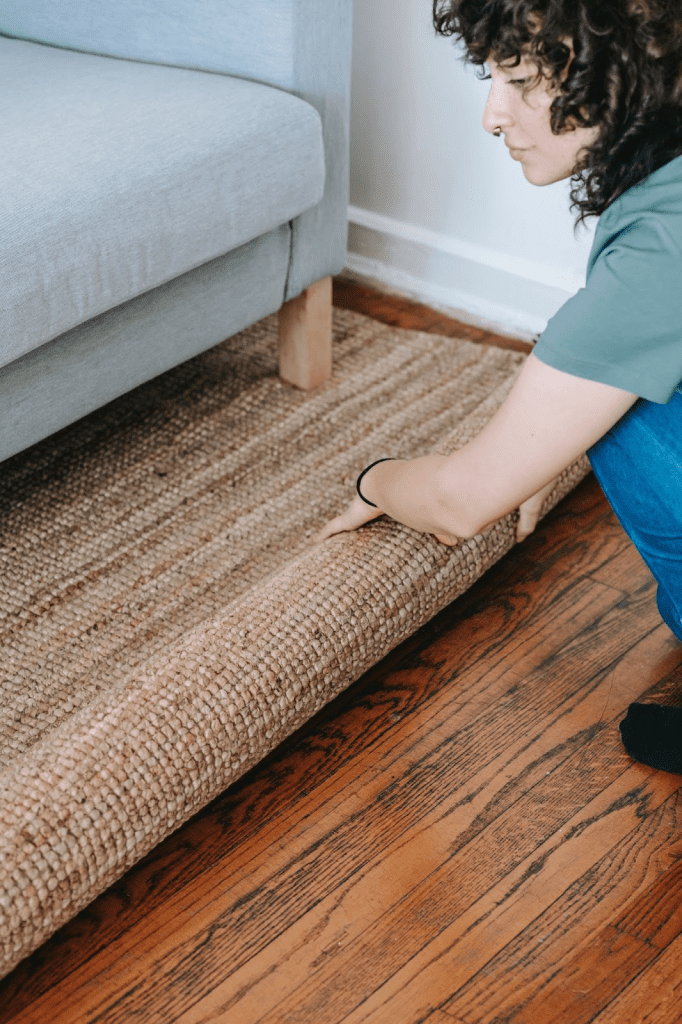
- Use Furniture Pads
Attach felt or rubber pads to the bottom of furniture legs to prevent scratches and dents when moving or rearranging furniture.
- Pet Care
If you have pets at home, make sure to keep your pets’ nails trimmed to minimize scratches. You can also place mats or rugs under your pets’ water bowl to prevent any spills from damaging your floor.

- Protect from Sunlight
Use curtains, blinds, or UV-protective window films to block or reduce sunlight.
In addition to regular cleaning and preventive measures, you can refinish your floor to maintain the look of your engineered wood floor
- Refinishing
Before you refinish your floor, make sure you know the thickness of the wear layer. Some engineered wood can be refinished a few times, some other can only be refinished once and some can’t even be refinished at all. If your flooring starts to show signs of wear or damage, consult with a flooring professional to determine if refinishing is an option and to follow the recommended procedures. Remember to always follow manufacturer guidelines.
Our Advise

Finally, our last word is to buy only high quality engineered wood flooring from best brands. Some of recommended brands out there are Kahrs, Ted Todd and Elka. If you need any assistance, do not hesitate to contact us for free consultation.


























